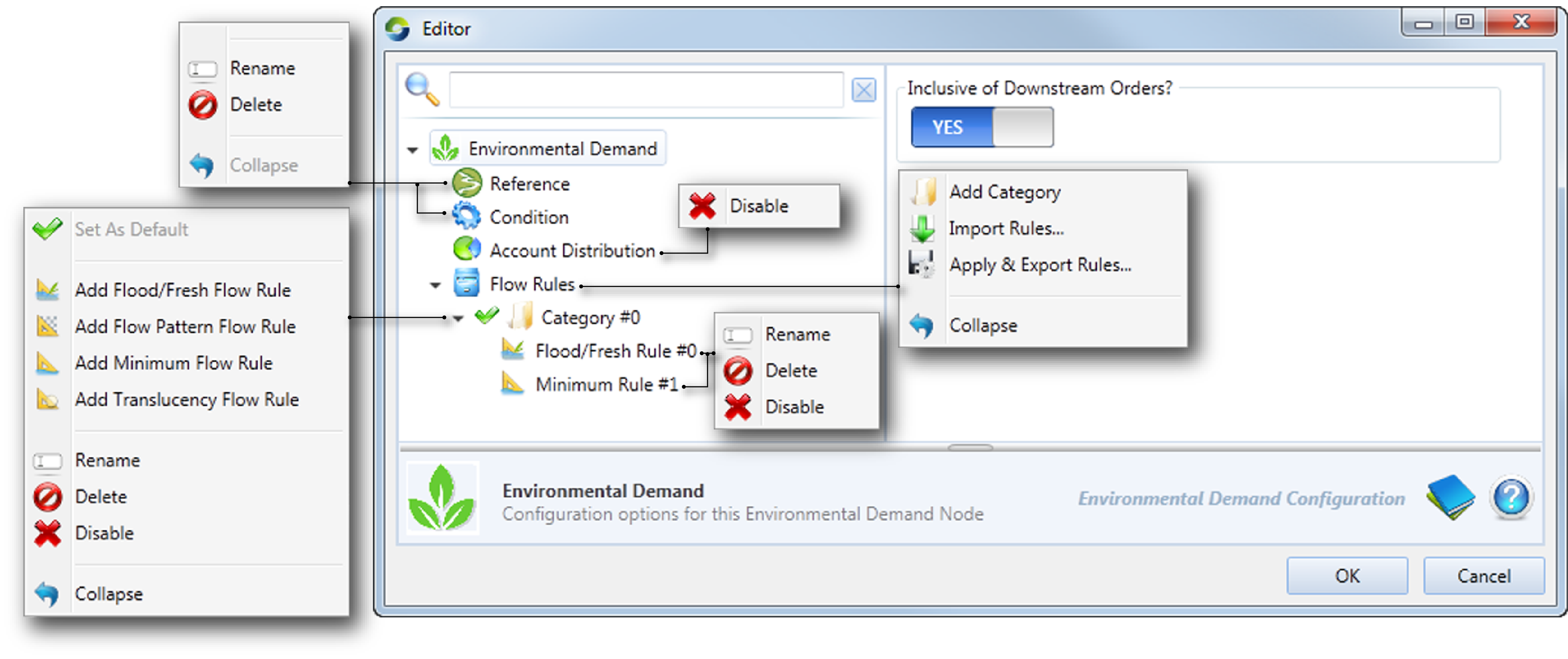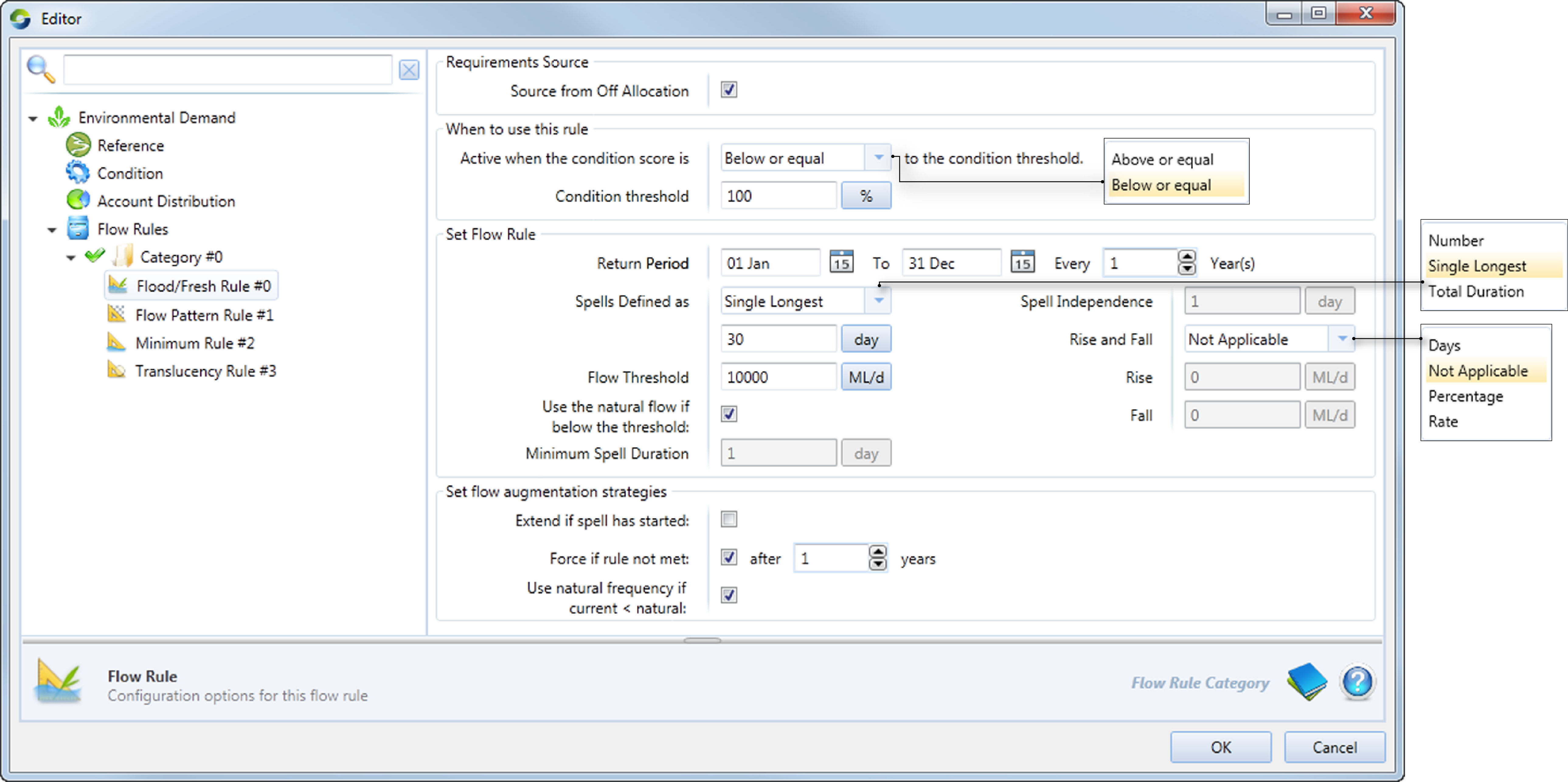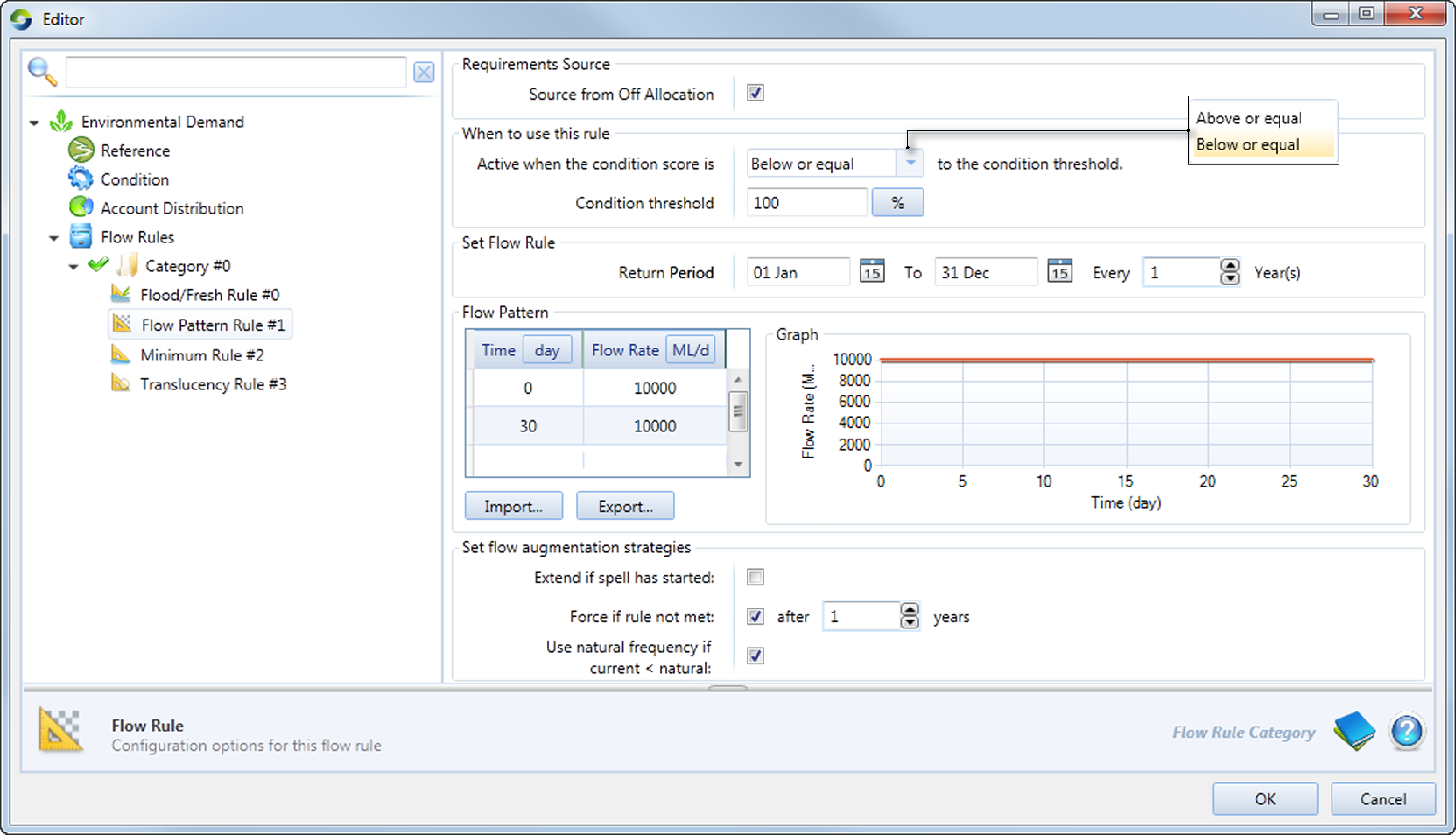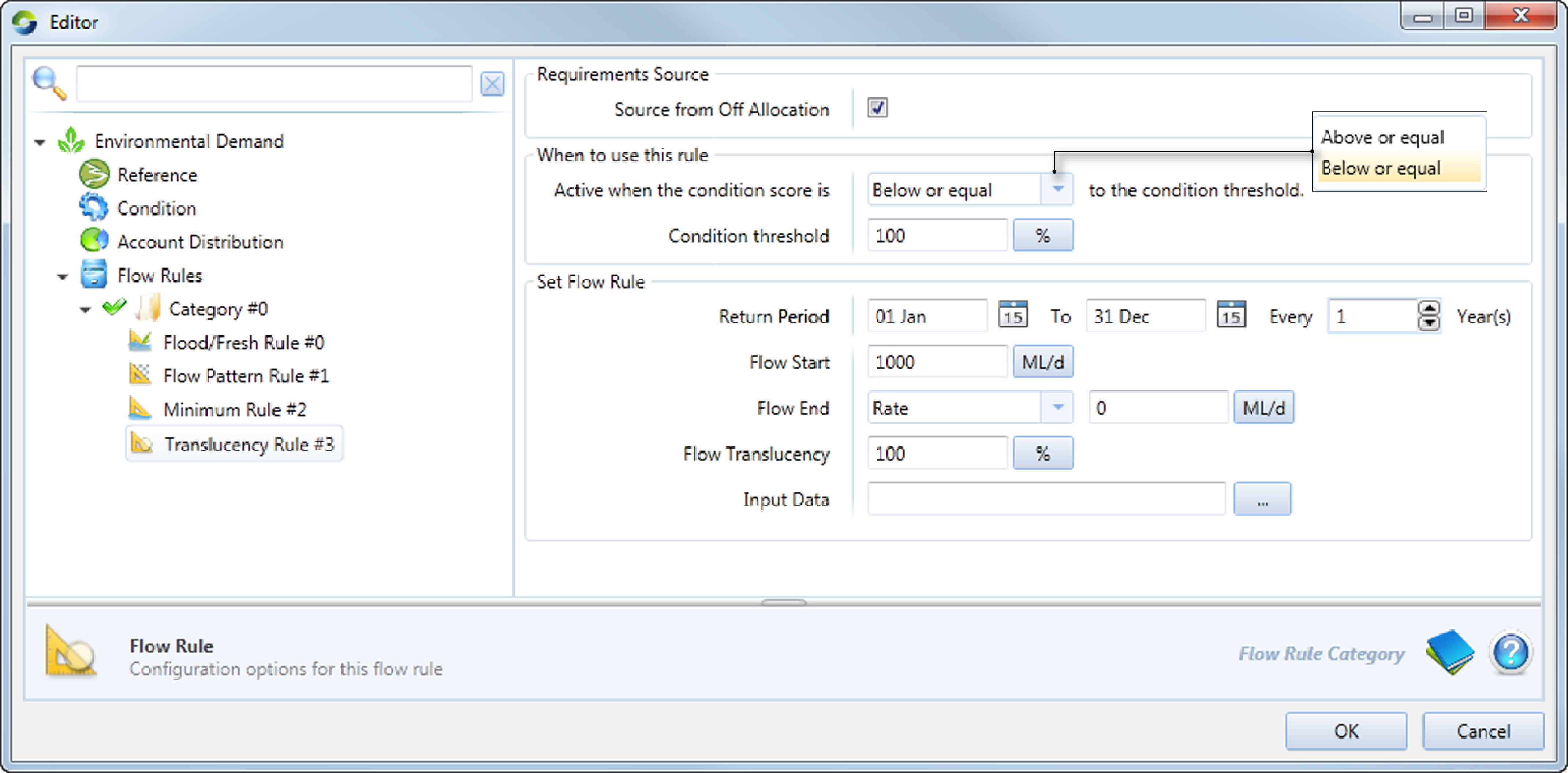- Created by teamcity (Deactivated), last modified by Former user on 23 Jan 2013
You are viewing an old version of this page. View the current version.
Compare with Current View Page History
« Previous Version 25 Next »
The Environmental Demand Model (EDM) operates on a daily basis generating demands and extracting water to meet these demands via the water user and supply nodes. It provides a way of capturing water patterns that the environment requires. These definitions of watering patterns are captured as ‘flow rules’. The aim of the model is to specify a flow rule set that will generate the water required to achieve predefined environmental objectives. This model can be applied in both regulated and unregulated systems.
This model also forecasts flows. Forecasting is required to estimate how much flow is likely to occur at a particular point in the system some time in the future, and hence how much additional water needs to be ordered to meet demand.
Create this model in Source as described in , which results in the window shown in Figure 1. Click Edit to define the rules, which opens the Environmental Demand Model dialog , and Select... to specify where the output will be saved.
Figure 1. Water User node (Environmental Demand)

Flow rules
The four types of flow rules presented in the EDM have been designed to capture the most commonly defined environmental flow requirements specified in environmental flow studies and water regulations. These four types of environmental demand rules allow users to construct a collective environmental water requirement by using combinations of environmental demand rules. The four rule types are:
- Baseflow - specifies a minimum flow, usually applied to maintain minimum habitat requirements;
- High Flow/Flood - specifies a flood fresh, usually associated with a recruitment event such as to trigger fish movement, water floodplain vegetation;
- Translucency - specifies the flow requirements in terms of some other time series, usually the release from a dam based on the inflow of the dam; and
- Pattern - specifies a pattern of flow, used to define multi-peak events.
Common elements of each of the four rule types that need to be configured are:
- Season - the period of the year over which the rule should be considered (eg a winter flooding rule only);
- Reporting interval - what is the acceptable number of years between applying the flow rule (eg high flows are only required once in 5 years);
- Augmentation Options -the preference for achieving the watering requirement. There are three augmentation options:
- Natural flow or matching a reference time series - usually uses a modelled scenario without development, and water demand for each rule will match the successful meeting of the rule that would occur under the reference flow;
- Extend - if a flow rule has started to be met, then water is ordered to extend the watering (eg tributary inflows have commenced a flood, and releases from the main channel dam may be used to extend the duration of the event); and
- Force - if by the end of the reporting interval, the flow rule has not been met, then a release will be ordered. This is similar to waiting until the last possible moment to meet the water requirements in the anticipation that the water requirements will be met by tributary flows or spills.
- When to use - each flow rule can have a ‘trigger’ specified, whereby for each day of the record, the trigger is checked against some relevant time series (such as storage volume) in order to set the flow rule to be on. This allows switching between rules at runtime to reflect watering options during dry vs wet periods.
Forecasting
The basic approach to determining water order is to consider the collection of flow rules and determine how much water is required for a given day to meet these rules. As water is not consumed by the EDM, the water order is simply the difference between the calculated water required and the forecast flow at the extraction point on the future delivery day.The EDM allows two forecasting periods, a short term and a medium term. This approach is to reflect real world water management decision making, whereby, depending on the size of the catchment, river operators can generally make a very accurate prediction of the likely flow for the next few days to weeks. After that time the prediction is less accurate. You can use the Expression Editor or specify another scenario to define the method of forecasting. The recommended methods for the look ahead period are to refer to an upstream node with a known travel time.
Base flow
The base flow objective is designed to capture minimum flow rules, such as where flow should be maintained above a certain limit for particular periods of the year. Figure 2 shows the parameters that must be specified for base flow. The controls for Input data and Forecast allow you to upload data as a time series file, an expression, or linking to another scenario.
Figure 2. Water User node (Environmental Demand, Base flow)

Flood/fresh
The most common type of flow requirement is a flood/fresh which defines a flow requirement above a set level. Figure 3 shows the parameters for defining this requirement.
Figure 3. Water User node (Environmental Demand, Flood fresh)

Flow pattern
You can create a temporally varying rule by simply defining the pattern of the flow required as well as a trigger condition. The trigger condition will be either a set start day or a flow threshold which has to be reached.
Figure 4. Water User Node (Environmental Demand, Flow pattern)

Translucency
This rule allows you to define conditions where flow would be allowed to pass through a storage or restrictions be placed on extraction in an unregulated system. It does not require an augmentation method as orders will be determined based on the inflows to the storage for the current time-step, and hence no forecasting is required.
Figure 5. Water User node (Environmental Demand, Translucency)

Conditions
The EDM also includes a condition tracker, which can be used to turn rules on and off. If the condition tracker falls bellow a threshold, the rule is turned on. If the condition tracker is above a threshold, then the rule is turned off. Only one condition tracker can be defined for a collection of rules. However, each individual rule can have its own threshold that decides when the rule is turned on. The condition tracker can be used to represent a multitude of environmental or accounting rules that turn flow rules on and off. Examples of using the condition tracker are:
- Representing the ‘health’ of an environmental asset; or
- Representing environmental rules that turn on and off when an account balance exceeds a certain level.
The condition can be included as a time-series file, or by using the expression editor.

- No labels